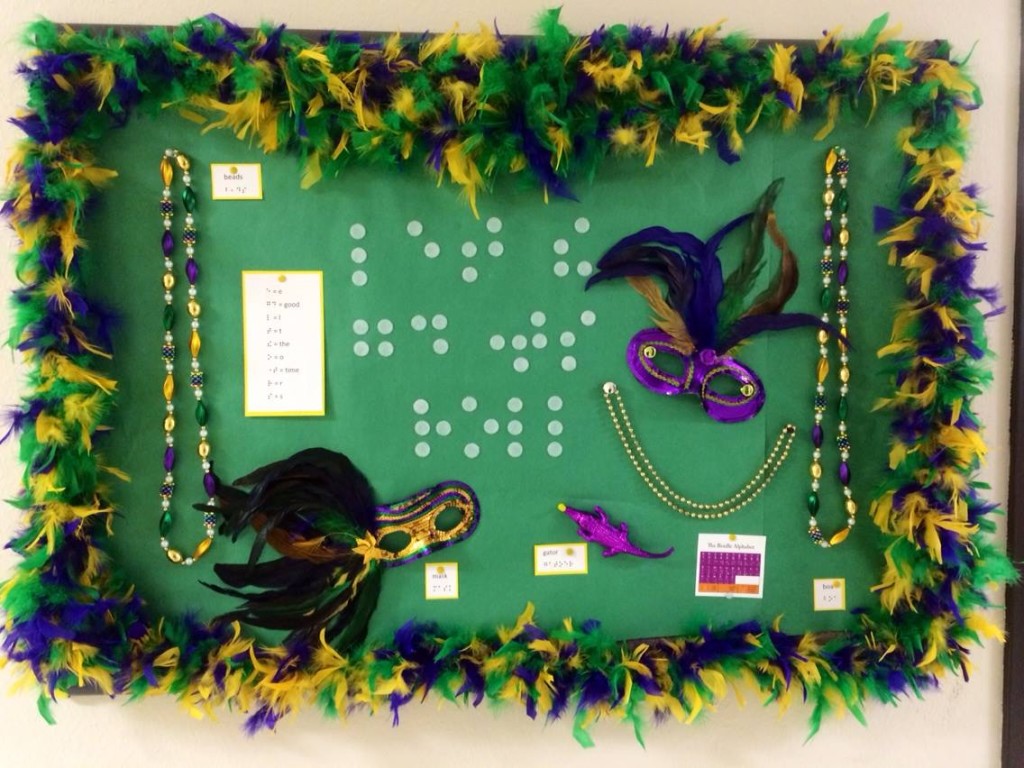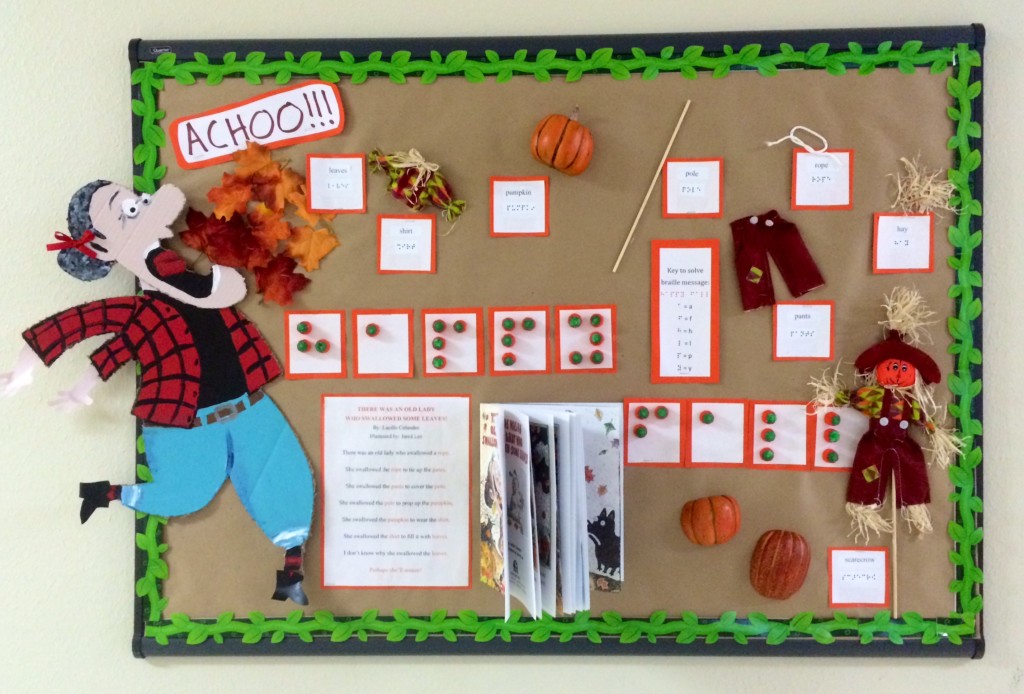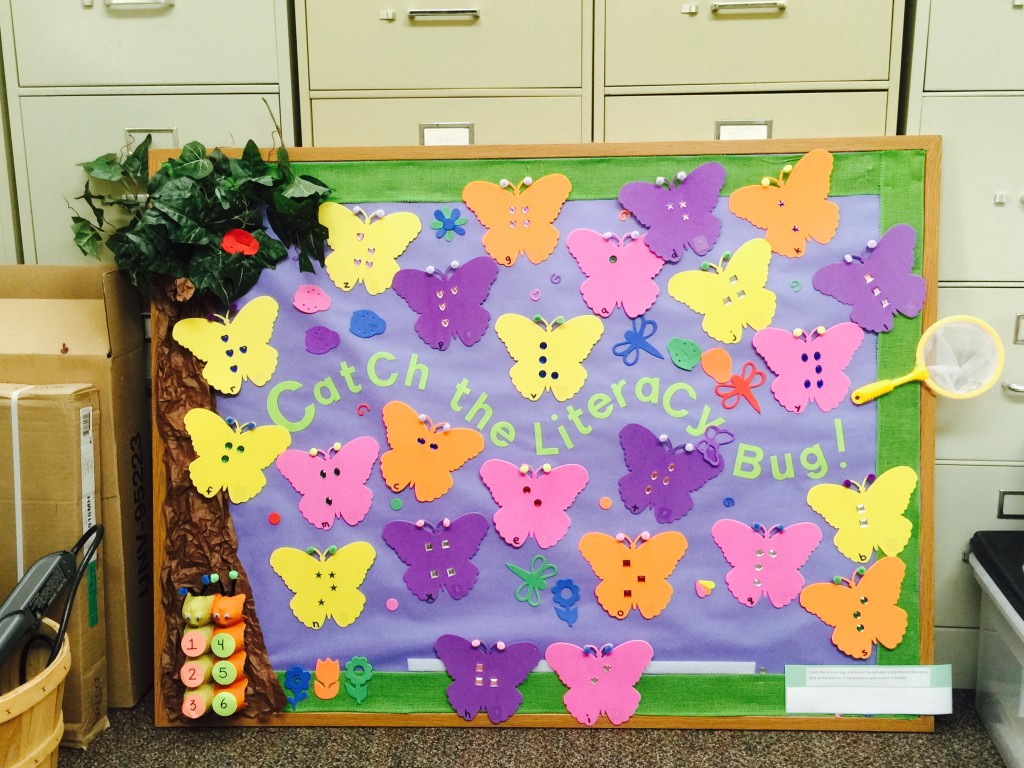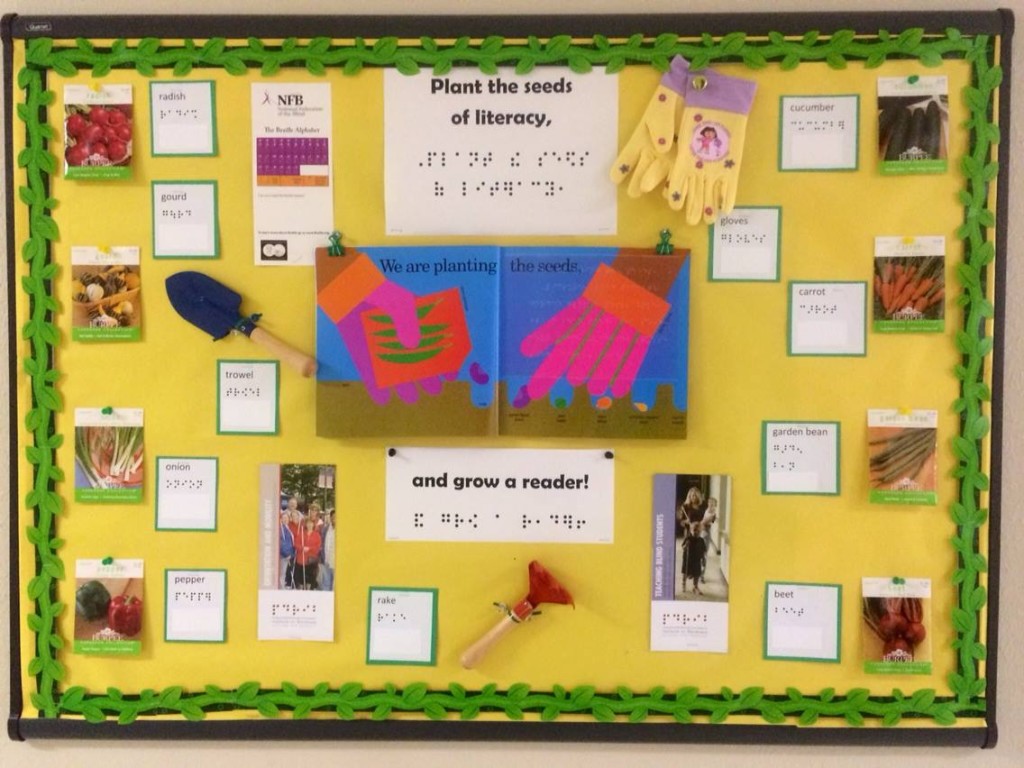
Liz Wisecarver, MA, NOMC

Latest posts by Liz Wisecarver, MA, NOMC (see all)
- International Travel as a Blind Person: ‘Don’t Throw the Nickel’ in India - December 16, 2015
- Time is Running Out to Learn the Latest Trends - September 3, 2015
- International Travel as a Blind Person: Europe and Its Varied Transportation Options - August 20, 2015
- With One Semester To Go, Clouds Remain over Braille in Math and Science - July 29, 2015
- Play Ball and Teach Sound Localization to Blind Students - July 17, 2015
As soon as children walk through the door into school, they are in a reading-rich environment thanks to the plethora of classroom signs, posters, calendars and—especially—bulletin boards. Sighted children take in the information incidentally by seeing it, but what about blind children?
With a little modification and creativity, bulletin boards can be made accessible and interactive for regular print, large print and braille readers alike.

Accessible bulletin boards incorporate braille alongside print and tactile elements to make them appealing to both blind and sighted viewers. The bulletin boards can focus on any topic, including scenes from a book or seasonal holidays. Real objects, such as candy, jewelry, leaves or any object that fits the theme, can be used to encourage children to touch. Different textured materials (like sandpaper, foam cutouts, foil and cardboard) can be cut and folded into any shape to give otherwise-flat graphics a dimensional characteristic.
Braille is the centerpiece of the accessible bulletin board
Including print, braille and SimBraille allows blind children to read tactilely and sighted children to learn how the braille code works. Twin-Vision books, that is those with both braille and print, can be put on the bulletin board for children to read. Moveable pieces, braille messages that can be decoded, and pockets with braille alphabet cards or other information for children to take home make the boards truly interactive.

Laura Bostick, an instructor at the Institute on Blindness, helps design the accessible bulletin board outside the Institute’s office at Louisiana Tech University, and she includes a discussion about them in her classes for future teachers of blind students.
“It’s really good for awareness in your schools for the sighted teachers and kids,” Laura said. “And they’re cool for the blind kids because it’s all accessible.”
Krystal Guillory, a teacher of blind students with Lincoln Parish (La.) public schools, also creates touchable bulletin boards featuring braille in the schools in which she teaches. Current master’s students at the Institute on Blindness and her elementary-aged braille students often help Krystal put the boards together.
“In the school system, a lot of the time your teachers will be assigned to do bulletin boards,” Krystal said. “i would encourage them to make the boards accessible. Since we put both print and braille on the boards already, even if there is only one blind child in the school, that encourages the sighted kids to tactilely interact with the board as well.”

Bulletin boards for blind students are easy to make.
Laura and Krystal worked together to craft kits with everything needed to make the “Catch a Literacy Bug” bulletin board pictured above. The kits were sold at the 2015 National Federation of the Blind of Louisiana State Convention and will be available on the NFBL online store. All proceeds go to support the 2015 Louisiana NFB BELL Program.
To make accessible bulletin boards, Laura said, you only need a hot glue gun and items that fit the theme. She suggested hosting a craft night with friends to help make all the pieces.
“I thought maybe teachers would do it more if we had a kit,” Laura said. “Once you do one, you kind of get the idea. we wanted to make it easier for teachers and hope they would keep making them.”
Sheena Manuel, an Outreach Specialist at the Institute on Blindness, used the board last year with her braille-reading student who was having trouble increasing her reading speed. The student drew a braille card and moved the bug farther on the board if she knew the word, letter or contraction. When she answered correctly and got enough bugs in the butterfly net, she won a prize.

“It gives the other kids and teachers an idea of what the blind students are doing, and makes it seem more cool.” Laura said. “The blind students can get something out of it for a change. It’s nice to do something that the blind kid can get something out of and be the expert on.”

Liz Wisecarver, MA, NOMC

Latest posts by Liz Wisecarver, MA, NOMC (see all)
- International Travel as a Blind Person: ‘Don’t Throw the Nickel’ in India - December 16, 2015
- Time is Running Out to Learn the Latest Trends - September 3, 2015
- International Travel as a Blind Person: Europe and Its Varied Transportation Options - August 20, 2015
- With One Semester To Go, Clouds Remain over Braille in Math and Science - July 29, 2015
- Play Ball and Teach Sound Localization to Blind Students - July 17, 2015
